What Is Modern Art? What Is Postmodern Art? What Is Contemporary Art?

Broadly speaking, the term "contemporary art" refers to art fabricated by artists who are alive and working today. But not all art made today tin can exist classified as "gimmicky." To fit the beak, fine art has to have a certain destructive, thought provoking edge or to take assuming, experimental risks. Information technology has to provide a fresh style of looking at the issues facing today's cultures. Because contemporary fine art is not a movement, there is no one defining mode, method, or approach. As such, well-nigh literally, anything goes.
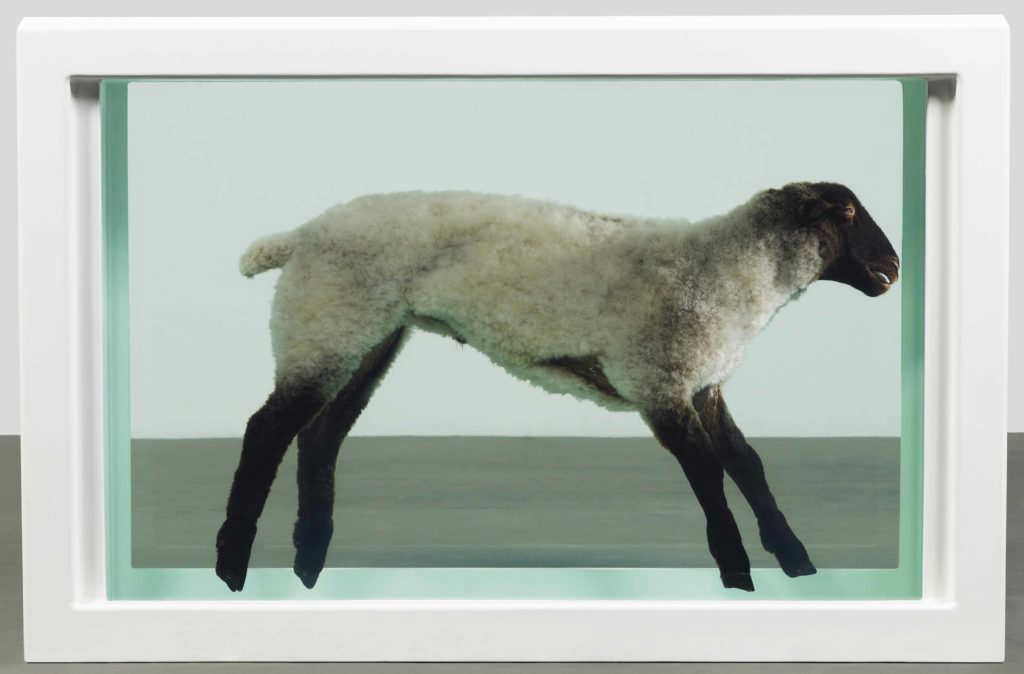
Subjects are as varied equally taxidermy animals, casts of body parts, mirrored rooms filled with lights, or behemothic drinking glass columns of degrading compost. Some make brave and adventurous combinations of materials that button boundaries and prove merely how limitless gimmicky art practice tin exist. Simply conversely, other artists also play with traditional media, such as drawing, painting and sculpture, investing into them an awareness of contemporary issues or politics that brings them up to engagement for the 21st century. If it makes people cease, think, and, at best, see the world in a new mode, then it's a great instance of contemporary fine art. Let'due south take a look in more than detail at some of those qualities that make contemporary art and so heady, along with some examples of the best artworks from around the globe.
Gamble-Taking in Contemporary Art

Contemporary artists aren't afraid to take bold, controversial risks. Ever since the Dadaists and Surrealists in the early on 20th century began playing with the shock value of fine art, artists have searched for more audacious means to make an impact. Some of the most experimental artists of the last few decades were the Young British Artists (YBA's), who rose from London in the 1990s. Some used establish objects in unprecedented ways, similar Damien Hirst , who horrified the art world and public alike with dead animals preserved in formaldehyde, including sheep, sharks and cows; he even put rotting meat filled with maggots in a drinking glass box for everyone to see .

Are you enjoying this article?
Sign up to our Free Weekly Newsletter
Delight check your inbox to activate your subscription
Thanks!
Others have brought deeply personal material out into the public eye, like Tracey Emin . Emin turned her dirty, unmade bed into a work of art in My Bed, 1998, leaving a trail of embarrassingly intimate debris around it, including soiled underwear and empty pill packets. In the aforementioned vein, her paw-woven tent titled Anybody I accept Ever Slept With (1963-1995), 1995, had a long listing of names stitched into it, causing a media sensation.

American multimedia creative person Paul McCarthy also enjoys stirring up trouble. One of America's most basis-breaking video artists, he toys with the boundaries between pleasure and cloy, capturing strange, sinister characters rollicking in bodily fluids, melted chocolate and other sticky matter.
Similar McCarthy, African-American artist Kara Walker's art is aimed at making viewers sit upwardly and take notice. Addressing America's dark history of slavery, she creates cutting out silhouettes that tell horrific stories of torture and murder based on real historical events, creating overwhelming artworks that have attracted both controversy and praise over the years.
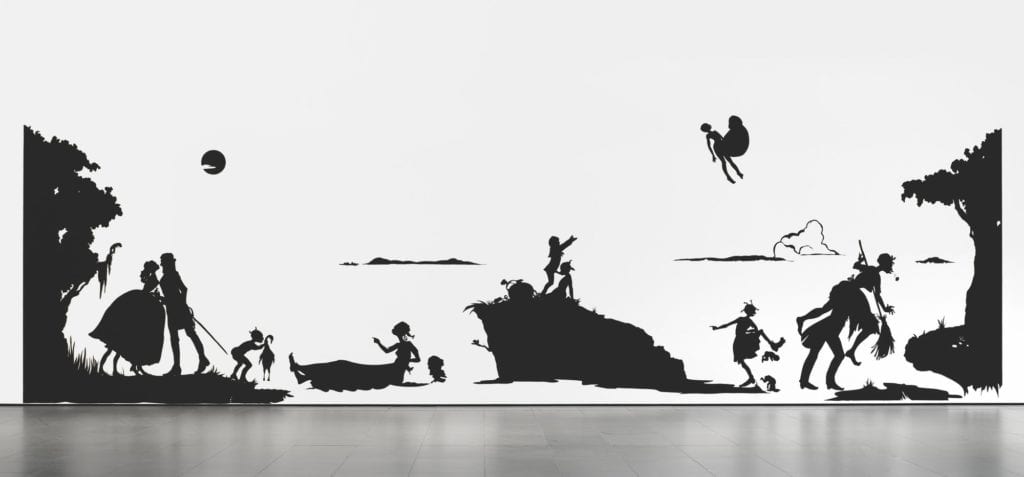
Keeping it Conceptual
Much of today's gimmicky art has been influenced by the Conceptual Art movement of the 1960s and 70s, when artists put precedence on ideas over form. Some of the most important examples of Conceptual Art include American artist Joseph Kosuth'south series Titled (Art equally Thought as Idea), 1966-7, in which he replicates dictionary definitions of art terms as mounted photographs, exploring the means language infiltrates the understanding of art objects. American sculptor Sol LeWitt'due south wall drawings likewise typify the Conceptual Art era, because he came upward with the idea to brand them, but passed their execution on to a squad of others, proving that artists don't have to actually brand art to call information technology their own.

British contemporary creative person Martin Creed carries on this legacy, with an emphasis on unproblematic, memorable concepts rather than hand-crafted art objects. His revolutionary installation Work No. 227, The Lights Going On and Off, 2000, was an empty room in which the lights flashed on and off periodically for five seconds each. This seemingly simple artwork concisely challenged the conventions of the gallery infinite and the way the viewer interacted with information technology through the exploration of commonplace matter from ordinary life, and it even won him the Turner Prize in 2001.
Another British contemporary creative person, Peter Liversidge , explores the human relationship betwixt linguistic communication and art, making the purity of an idea the central tenet of his work. From his kitchen table he dreams upward a series of actions or performances, which he then types out equally a "proposal" on his old manual typewriter, always on an A4 sheet of newspaper. Made in serial, in response to item places, he so tries to acquit out the proposals he tin can, which range from the boring or mundane to the dangerous and impossible, such equally "painting a wall gray" to "damming the Thames."

Russian creative person collective Pussy Riot also takes a conceptual approach with their rebellious punk art past merging performance art, poesy, activism and protest. Rallying confronting Vladimir Putin'due south dictatorial authorities of Russian federation, their Punk Prayer operation in one of Russia'southward largest cathedrals in 2012 fabricated the world news, but sadly landed ii members in prison for two years, prompting a worldwide rallying cry from liberals around the world to "Free Pussy Anarchism!"
Postmodern Approaches
Postmodernism, literally meaning "subsequently modernistic", arose as a phenomenon in the 1970s when the digital revolution took over and nosotros were bombarded with a constant flux of information at our fingertips from the past, present, and future. Unlike the pure, clean simplicity of earlier Modernism, Postmodernism focussed on complexity, plurality and confusion, mashing together references from art, popular culture, media and fine art history to reflect the disruptive times we are living in. Installation art became popular during this fourth dimension, as boundaries betwixt mediums were blurred, and could be combined together in a rich variety of ways.
There are many overlaps between Postmodern Art and contemporary fine art, considering many of those pioneering artists who made the get-go Postmodern Fine art in the 1970s and 1980s are notwithstanding living and working today, and are continuing to influence the next upwardly and coming generation.
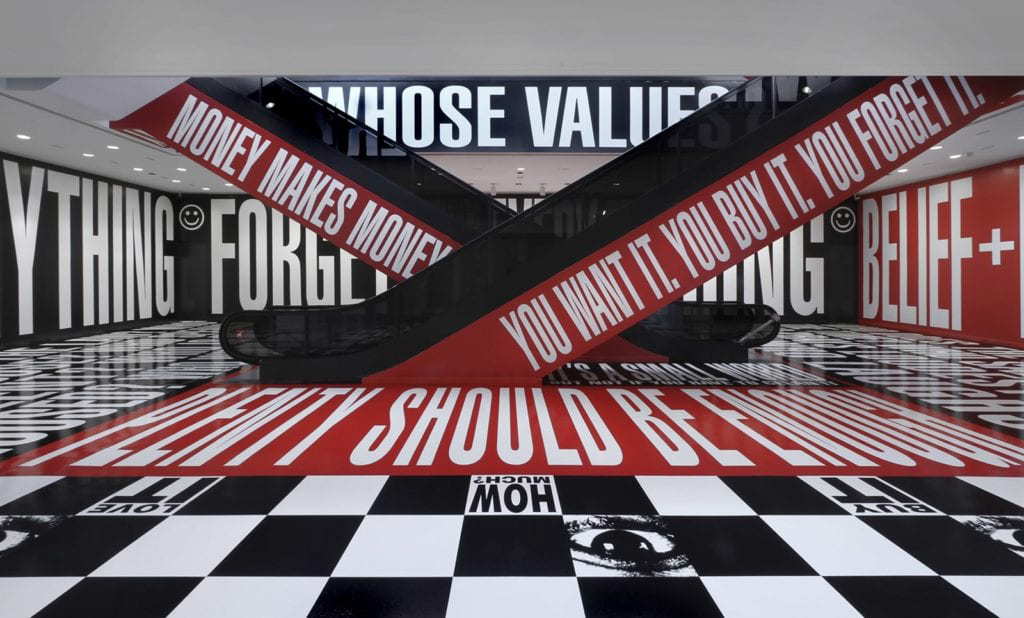
American multi-media artist Barbara Kruger's text art of the 1970s and beyond typified the Postmodern linguistic communication. Playing on the daily riff of slogans we unconsciously digest from advertisements and newspapers, she turned them into confrontational or provocative statements. In her more contempo installations, a barrage of textual data spreads beyond gallery spaces, covering walls, floors and escalators with emblazoned, punchy slogans that each fight against each other for our attention.

More recently, many contemporary artists take combined a complex, Postmodern language with various socio-political bug. British-Nigerian artist Yinka Shonibare examines the multi-layered relationships between Europe and Africa, with richly layered, carefully crafted installations based on violent, oppressive or catastrophic events. Mannequins or stuffed animals are staged into theatrical arrangements wearing vibrant, boldly printed Dutch wax fabric, a textile historically associated with both Europe and West Africa.
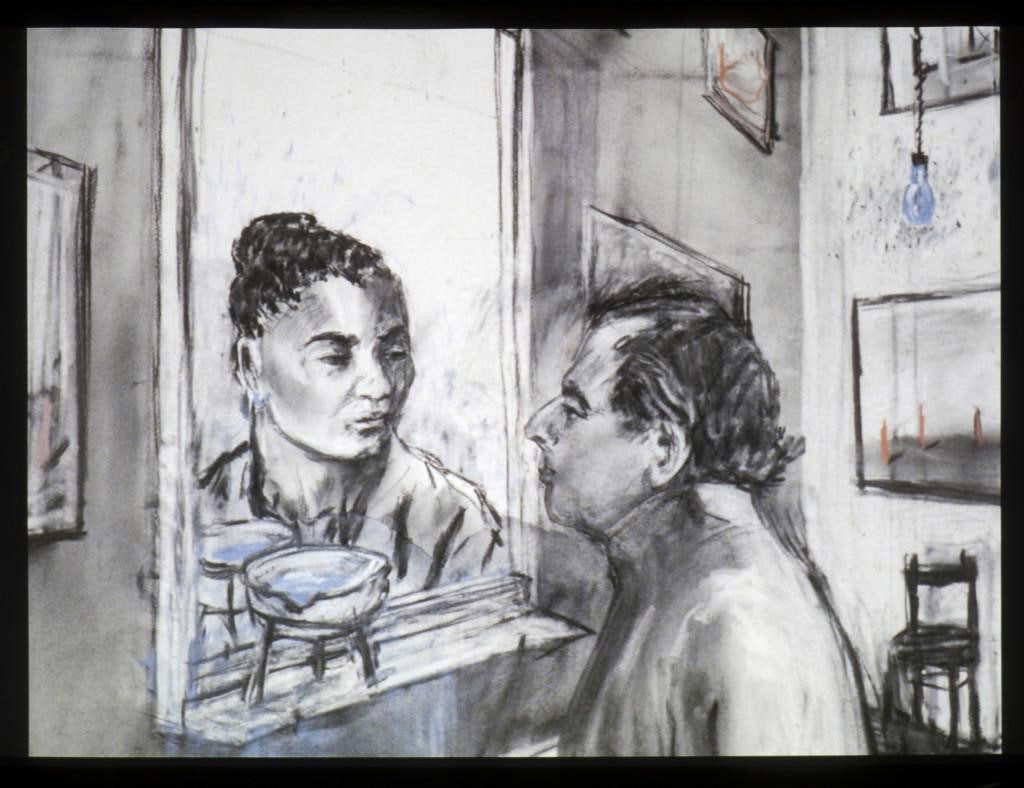
South African artist William Kentridge also makes reference to history through a complex, fragmentary linguistic communication. Converting his sketchy, black and white charcoal drawings into rudimentary animations, he weaves together part-fictional, role-factual stories nearly characters from both sides of apartheid, investing a painfully human side into the racial conflicts he was surrounded past while growing upwards.
Experimentation with Materials

Breaking with convention and tradition, many of today'southward contemporary artists accept made artworks from unlikely or unexpected matter. British artist Helen Chadwick filled a articulate drinking glass column with rotting garbage in Carcass , 1986, which accidentally sprang a leak and exploded across London'due south Found of Contemporary Art. She later fabricated a huge fountain filled with molten chocolate in Cacao , 1994, which gurgled the thick liquid on a constantly flowing bicycle.

Chinese contemporary artist Ai Weiwei has made an impressive range of mixed-media installations that reflect on fine art's role in political activism. In Colored Vases , he dipped a drove of priceless aboriginal Chinese vases in industrial pigment and left them to drip dry. Clashing together old and new, he reminds u.s. that ancient traditions still alive beneath the glossy, contemporary surface.

Experimentation is likewise at the heart of Japanese multi-media artist Yayoi Kusama 's practice. Known as "the princess of polka dots," she has been covering a seemingly endless assortment of surfaces with her trademark amorous patterns for decades, transforming them into mystical, hallucinatory dreams. Her dazzling Infinity Rooms take been recreated around the world, walled with mirrors and filled with a myriad of colorful lights which refract effectually the space, creating the illusion of a digital cyberspace that seems to keep forever.
Reworking Tradition

Some of the most exciting examples of contemporary fine art rework media that has been around for centuries, taking traditional materials and updating them with novel subjects or methods. American painter Julian Schnabel made his proper noun with "plate paintings", sticking broken shards of quondam plates and other crockery into the painted surface forth with gloopy, expressive oil paint. Lending them the quality of ancient Iznik relics , they are made new with narrative references to modern life.

In contrast, Ethiopian artist Julie Mehretu creates vast, expansive drawings and prints which are built up gradually into a complex serial of layers. Open, floating networks, grids and lines float through infinite, suggesting the daily flux of contemporary urban living, or possibly dispersed ideas for cities yet to exist congenital.
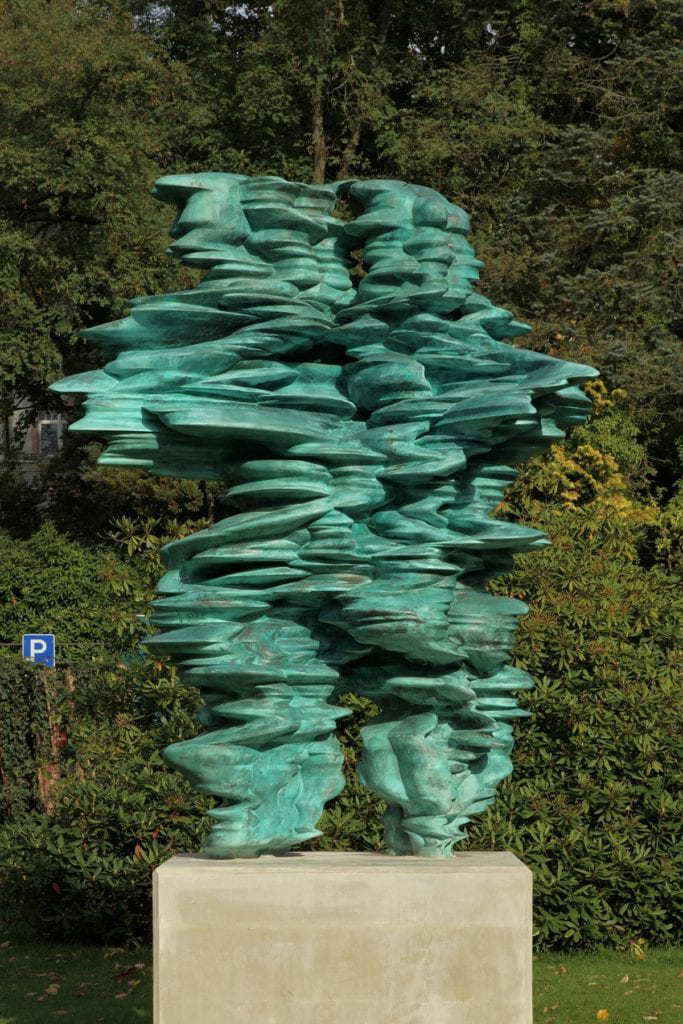
Engineering science also informs the work of British sculptor Tony Cragg . Designed partly on computer and partly past manus, his fluid, organic sculptures seem to merge homo with car, flowing like molten metal or moving h2o through space. Fabricated with a rich variety of materials old and new, including stone, clay, bronze, steel, glass and woods, they transform one time static materials into objects that pulsate with flowing energy. Encapsulating the way digital engineering science has go one with our everyday existence, his sculptures show just how powerful and concise contemporary fine art can be.
Source: https://www.thecollector.com/contemporary-art/
0 Response to "What Is Modern Art? What Is Postmodern Art? What Is Contemporary Art?"
Post a Comment